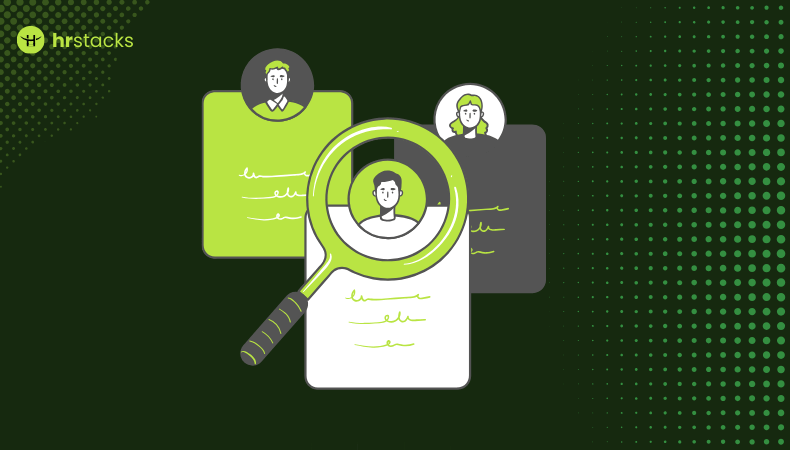It’s easy to focus on the flashy headlines about hackers, but sometimes the real danger comes from inside. When someone in HR clicks the wrong link or a former employee retains access, it can hurt just as much as any external hack.
Most data breaches start with simple mistakes, usually by someone inside. Some reports say human error causes up to 95% of breaches, often involving current or former staff.
That makes HR not just a support function, but a critical defense line. While IT teams focus on technical shields, HR can shape the culture, define policies, and reinforce daily practices that stop data from slipping out the front door, whether accidentally or intentionally.
HR teams deal with a lot more than just policies and paperwork; they’re often the first to spot risks. Whether it’s making sure only the right people see sensitive data or helping employees understand what a phishing email looks like, HR can play a real role in keeping the company safe. In this article, we’ll cover seven ways HR can do just that.
When HR treats people, not systems, as the front line of defense, it’s easier to spot risky behavior before it becomes a breach.
7 Ways HR Can Prevent Internal Data Breaches
- Build a Security-First Culture
- Manage Access with Principle of Least Privilege
- Enforce Authentication, Encryption & Key Management
- Secure Remote Work & BYOD
- Audit Regularly & Vet Vendors
- Strengthen Incident Response & Monitoring
- Align with Legal, Ethical & Trust Policies
Fostering A Security‑First Culture
Preventing data leaks starts in people’s heads, not with firewalls. When employees feel safe to raise concerns or ask questions, security becomes something everyone cares about, not just IT.
1. Embed Security in Daily Operations
Most people forget what they learned in that one-off security training session. A quick reminder in the monthly HR email or a story about a real (but minor) slip-up can help keep security top of mind. It doesn’t have to be complicated; it just has to be consistent.
Case in point: regular updates can prevent complacency and keep vigilance high, reinforcing that even small lapses matter.
2. Build Psychological Safety
Employees are far less likely to flag suspicious requests if they fear backlash. Leaders must create environments where raising doubts is seen as diligence, not defiance.
The Chartered Management Institute stresses that psychological safety, encouraging questions and challenging authority is a key defense against social-engineering attacks.
3. Move Beyond Compliance-Only Training
Traditional annual modules often miss the mark. HR should deploy ongoing, role-specific training, think bite-size microlearning, gamified phishing simulations, or department-targeted workshops. Engaging content increases retention and fosters a proactive security mindset.
4. Recognize & Reinforce Positive Behavior
When someone reports a phishing attempt or follows secure practices, HR can spotlight them through public acknowledgment, small rewards, or performance reviews. This positive reinforcement signals that security awareness is valued and visible.
5. Drive Leadership by Example
Security culture becomes genuine when leaders visibly follow best practices, like timely security alerts, MFA usage, or sharing their lessons learned.
If your leaders don’t take security seriously, why would anyone else? When the CEO uses multi-factor authentication or talks openly about falling for a phishing attempt, it sends a clear message: this stuff matters.
By building a culture where security becomes part of what you do, not just what you teach, HR ensures employees act as the first line of defense, catching threats before they escalate.
Implementing Robust Access Controls
It’s not only about security software, it’s about who can actually see which data. Access control is less about gadgets and more about mapping who really needs what, and when.
Define Clear Roles And Responsibilities
Successful access management begins by mapping job functions to access needs. HR should work with department heads to identify specific roles, such as “Recruiter,” “Payroll Admin,” or “HR Analyst,” and list the exact systems and data each requires. This alignment is crucial for compliance and operational clarity.
Enforce The Principle Of Least Privilege (PoLP)
Granting employees only the access essential for their roles minimizes risk. Sometimes employees have access to way more than they need, just because no one ever took it away. That’s how mistakes happen, or worse, how data walks out the door when someone leaves on bad terms.
Implement Role-Based Access Control (RBAC)
RBAC centralizes permission management: users inherit access through predefined roles rather than individually assigned rights. This simplifies onboarding/offboarding and keeps permissions aligned with organizational structure.
Separation of Duties (SoD)
Prevent any single person from holding too much power. For instance, the person processing payroll shouldn’t also approve it. Combining roles like that increases fraud and error risk. SoD, implemented via RBAC constraints, is essential.
Automate Provisioning, Changes & Deprovisioning
HR should integrate systems, like Active Directory, HRIS, and IAM, so access rights are assigned, updated, or revoked automatically upon hiring, promotion, or departure. Automation reduces errors and ensures compliance.
Regular Audits & Reviews
Access controls must evolve. Businesses change, roles shift, and people move. Quarterly or biannual reviews, such as ideally with HR audits, IAM logs, and stakeholder sign-off, help identify orphaned accounts, over-permissions, and stale roles.
Use the Right Tools
Choose IAM platforms (Okta, SailPoint, etc.) that support role-based workflows, approval processes, and audit trails. These tools simplify enforcement of RBAC, PoLP, and SoD, while offering centralized visibility and compliance reporting.
Why HR Ownership Matters:
HR holds the truth on job functions, organizational changes, and the personnel lifecycle. Pairing that knowledge with automated workflows ensures access privileges are always aligned and immediately revoked when someone leaves.
It’s a simple way to make sure that when someone leaves, they don’t take sensitive data with them, by accident or on purpose.
By defining roles plainly, applying least-privilege access, separating duties, automating provisioning, and maintaining regular reviews, HR ensures sensitive information remains in the hands of those who truly need it, no more, no less.
Role-Based Access Matrix
| HR Role | Access Required | Access Level | Controls Needed |
|---|---|---|---|
| Recruiter | ATS, Candidate Data | Limited / Conditional | Auto-expiry access after hiring |
| HRBP | Employee Records, Performance Data | Moderate | Audit logs + role-based limits |
| Payroll Admin | Payroll Platform, Bank Info | Elevated | MFA, Encryption, Quarterly reviews |
| HR Analyst | People Analytics Platform | Read-only | Data masking + access expiration |
| HR Intern | General HR Docs, No PII | Minimal | No sensitive data access |
Enforcing Strong Authentication & Encryption
Encryption and login checks aren’t just technical rules, they’re essential locks on your doors. Even if someone breaches credentials, encrypted data stays scrambled without the right keys.
Mandate Multi‑Factor Authentication (MFA)
MFA is one of the most effective defenses against account compromise. Studies show that enabling MFA can prevent up to 99.9% of automated attacks. Some big security mess-ups, like what happened at UnitedHealth, could’ve been avoided if multi-factor authentication was in place. It’s not foolproof, but it’s one of the easiest wins out there.
HR must enforce MFA for all systems managing employee data, using app-based or biometric methods where possible, to close off credential-based threats.
Deploy Strong Password Policies
Complex passwords remain a key line of defense. Enforce minimum standards, such as at least 12 characters, a mix of cases, numbers, and symbols, with regular rotations every three to six months.
Tools like password managers help users adhere to best practices, while lockout policies deter brute‑force attempts.
Encrypt Data At Rest & In Transit
Even if someone steals your data, encryption turns it into nonsense without the key. Encrypt all HR databases and files (data at rest), and secure communications (data in transit) via TLS/SSL.
Encryption works best when it’s strong enough to be useless to hackers even if they do get in. AES‑256 is one of the standards many companies use because it’s tough to crack. Beyond regulatory compliance, encryption minimizes breach damage and safeguards trust.
Manage Encryption Keys Securely
Key management sounds technical, but it just means keeping the keys safe, changing them often, and backing them up somewhere secure.
Consider using a Key Management System (KMS) to automate these processes and reduce human error, amplifying your protection layer.
Why HR’s Role Is Essential:
HR teams own the user lifecycle, from onboarding to offboarding. By enforcing MFA, strong password hygiene, and encryption consistently, HR ensures that access to sensitive information remains tightly controlled at every stage.
When combined with education and culture-building, these technical measures give HR teams the tools needed to transform employees from potential vulnerabilities into an effective line of defense.
Managing Remote Work & BYOD Environments
Supporting remote work and BYOD setups significantly expands an organization’s digital footprint, but without careful controls, so does its risk. HR must champion policies and tools that preserve both flexibility and security.
Secure Access & Devices
Remote staff should connect only through a company-managed VPN to encrypt traffic and protect corporate resources.
Company-issued or managed devices, equipped with endpoint protection, disk encryption, and access control, should be the norm.
Before someone logs into your HR system from home, their laptop should be up to date and have basic protections in place. If it’s missing patches or antivirus, that’s a problem, not just for them, but for your whole company.
Formal BYOD Policy
Drafted BYOD policies define which devices and operating systems are permitted, set security standards (e.g., strong passwords, encryption, forced updates), and detail procedures for lost devices and violations. Employees should formally agree during onboarding or enrollment.
Endpoint & Data Control
MDM or UEM platforms enforce compliance, enable remote wipes, and separate work from personal data.
Complement this with Data Loss Prevention to block sensitive HR data from being transferred via email, USB, or unsanctioned cloud services.
Employee Education & Monitoring
Give staff targeted training on secure usage, such as covering VPN, safe Wi‑Fi, password managers, and identifying phishing attempts.
Regular audits and automated monitoring of device posture and data access ensure early detection of risks and maintain compliance.
Performing Regular Audits & Vendor Oversight
To maintain control over internal data risks, HR must champion consistent auditing and vigilant vendor oversight. Regular internal audits of HR systems help uncover anomalies, unusual access logs, stale permissions, or policy drift, before they lead to breaches.
TechTarget emphasizes auditing login records, system settings, and training compliance to ensure current safeguards remain effective. It’s also important to keep tabs on vendors, especially those who get access to sensitive info. Know what they see and how risky that access is.
AuditBoard outlines essentials like risk tiering, due diligence, contractual security requirements, and periodic reviews, all crucial for maintaining vendor trust.
Vendors handling critical data should undergo annual (or more frequent) security assessments, including right-to-audit clauses, SOC 2/ISO certifications, and performance KPIs.
Keeping tabs on vendors isn’t just about contracts; it’s about trust. If they mess up, it’s your team that deals with the fallout. Regular checks, clear expectations, and knowing who’s doing what with your data go a long way.
In doing so, HR ensures that both internal systems and external partners uphold the highest standards of data integrity and compliance.
Developing Incident Response & Monitoring
When a breach occurs, or even before, HR must be ready to coordinate swiftly and effectively. A documented incident response plan is essential, outlining clear roles, communication protocols, and escalation steps so that all stakeholders know their responsibilities.
HR is uniquely positioned to translate technical plans into plain language, ensuring staff understand what’s happening and how to react.
Response teams should include HR, IT, Legal, and Communications, working from tested playbooks and running tabletop exercises or simulations to identify gaps.
Real-time monitoring, via SIEM, user activity logs, and alerts, helps detect unusual behavior like bulk downloads or after-hours access. After every event, a coordinated debrief captures lessons learned and refines response procedures.
When HR, IT, and Legal practice incident scenarios together, everyone knows what to do. That means less panic and a faster bounce-back when things go wrong.
Complying With Legal & Ethical Obligations
HR has a legal and ethical responsibility to protect employee data and uphold the rights of individuals. A critical first step is data mapping and minimization, identifying all HR data sources and collecting only what’s necessary.
GDPR requires clear lawful grounds for processing, purpose limitation, and minimal retention of personal data.
Similarly, HR must maintain inventory and audit trails covering what data is held, who accessed it, and why.
Beyond data minimization, HR must enable employee rights, such as access, correction, and deletion requests under GDPR; this typically requires documented workflows and prompt compliance within one month.
Transparent communication, such as privacy notices explaining why data is collected and how it’s used, is essential for ethical standards and legal compliance.
HR also plays a vital role in regulatory reporting: GDPR mandates breach notification within 72 hours, while various state and sector-specific laws (like CCPA, HIPAA) may impose additional obligations. Contracts with vendors must include data protection clauses and periodic reviews to ensure third-party compliance.
Quantifying Insider Threats
Insider threats aren’t rare, recent data shows roughly one-third of breaches stem from within an organization, and more than 80% of companies have experienced at least one internal attack in the past year.
These incidents can be remarkably costly, with average losses per breach running well into the millions, sometimes exceeding $15 million, and often take months to detect.
Understanding the scale and nature of internal threats helps tailor prevention strategies.
- Severity of insider incidents: Hackers often take headlines, but 82% of data breaches involve human factors, and 90% of incidents arise from user mistakes. Meanwhile, insiders, not outsiders, pose a substantial ongoing risk.
- Monitoring privileged access: Database Activity Monitoring (DAM) can detect anomalous access or modifications, critical for limiting insider misuse of sensitive data.
- DLP systems as preventive tools: Data Loss Prevention tools detect potentially risky transfers (USB, copying, emailing). HR can help define policy and scope for DLP, in concert with IT.
Metrics & KPIs To Measure Success
Measuring progress is essential for HR to demonstrate how data-security initiatives reduce risk and build resilience.
HR can track things like who finishes training, how many people click fake phishing links, or how fast accounts get shut down when someone leaves. These numbers help show what’s working, and what’s not.
Trackable metrics bolster accountability and continuous improvement.
- Security Awareness Training Completion Rate: Percentage completing HR-led security training programs to ensure organization-wide engagement and awareness.
- Phishing Simulation Click Rate: Proportion of employees clicking simulated phishing links, tracking susceptibility and training effectiveness.
- Time to Provision/Deprovision Access: Average time from hiring/leaving to granting or revoking system privileges, reduces orphaned account risks.
- Privileged Access Review Frequency: How often HR verifies high-level access remains appropriate, enforcing least privilege.
- Policy Compliance Rate: Percentage of employees and systems adhering to HR security policies and configuration standards.
- Mean Time to Detect or Respond (MTTD/MTTR): HR-led incident detection/response times, demonstrating readiness and effectiveness.
Roadmap For HR Leaders
A clear, step-by-step roadmap empowers HR leaders to shift from reactive compliance to proactive data protection.
According to Aon, identifying insider threats, especially during organizational change, is a top priority that demands structured planning and communication strategies.
Experts emphasizes that a strategic HR roadmap aligns talent and security initiatives with broader business objectives, improving resilience and enabling intentional progress across risk, compliance, and culture.
| Priority Area | Actions for HR Leadership |
| Security Culture | Launch awareness campaigns and embed security in routine communications |
| Access Controls | Schedule regular audits, conduct vendor assessments, and align with data governance |
| Technical Safeguards | Implement RBAC, enforce MFA, manage device policies, and streamline offboarding |
| Audit & Vendor Oversight | Maintain inventory, enforce compliance, foster transparency, and lead post‑breach messaging |
| Incident Preparedness | Develop detailed response plans, templates, and conduct simulations |
| Legal & Trust Management | Maintain inventory, enforce compliance, foster transparency, lead post‑breach messaging |
| Metrics Tracking | Define KPIs, measure improvements, and report to leadership |
Conclusion
When HR works with IT and Legal, it’s not just about ticking boxes. It creates a real defense, led by people, not just systems. When people feel safe speaking up, mistakes are caught early, and that reduces human error, which is at the heart of most breaches.
Enforcing thorough onboarding/offboarding, access controls, and ongoing audits ensures data stays in the right hands at the right times. Preparing for incidents and maintaining legal and ethical standards builds trust, both internally and externally.
HR isn’t just there to enforce rules; they help build a culture where people actually care about doing the right thing. When that happens, security becomes everyone’s job, not just IT’s. And that’s how you protect what really matters: your people and their trust.











